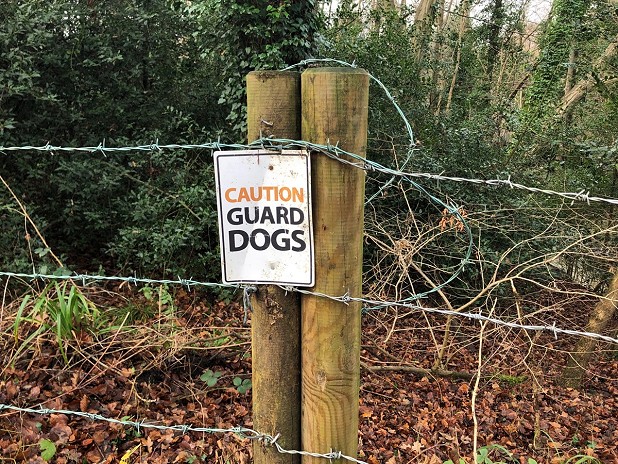'Islands' and Blocked Footpaths - Campaigners Decry the State of England's Countryside
Public access to England's countryside is in a poor state, say campaigners, thanks to piecemeal legislation, a mess of 'absurd' permitted and no-go areas, and thousands of blocked Rights of Way.
According to new research carried out by Right to Roam, a group pressing for Scottish-style responsible access, there are around 2500 'access islands' in England, places where the public have may a right to roam under the Countryside and Rights of Way Act (CRoW), but which they have no right to reach. Many of these sites can only be visited by trespassing over adjacent land not covered under CRoW.
This messy issue has arisen because of the piecemeal way that England's public access has evolved. CRoW, passed under the last Labour government, gave people a right to roam over specific areas - largely mountains, moorland, heathland, downland and commons - designated 'access land' that in total covers only around 8% of England.
Many of these areas are highly fragmented, and in some places stranded within a 'sea' of other landscape types where the public has no legal right to go.
"The absurdity of access islands is a clear example of why our current system of access rights in England is broken" said Lewis Winks of Right to Roam.
"Often people don't know where they have a right to go in the countryside. It's ridiculous that the public have to trespass to reach these fragments of land where they have a legal right to roam – all because of our piecemeal approach to access in this country.
"There are no access islands in Scotland, however, which created a default right of access to most land and water in 2003, to be exercised responsibly and subject to sensible exemptions and rules."
In a General Election year, with political parties pledging to increase access to nature in England, it's vital, say campaigners, that past mistakes are rectified and that Scotland's successful experience should serve as an example.
Blocked paths
Away from the open Access Land, England's extensive Rights of Way network appears to be similarly dysfunctional.
The Open Spaces Society (OSS), Britain's oldest national conservation body, has slated the 'shocking' state of public paths as revealed by a BBC survey last month.
According to the survey, paths are blocked at 32,000 points in England and Wales, equating to one obstruction every four and a half miles of path network. And these problems are growing. Seventy three of the 118 highway authorities (excluding London) answered the BBC's questions, reporting a total of 31,816 obstructions, a 15% increase in the ten months since the end of 2022.
"This is surely a significant underestimate" said Kate Ashbrook, the society's General Secretary.
"Many people do not report problems or know how to, thousands of unrecorded highways were not included in the responses, and one can guess that the 45 authorities which were silent were among the worst performers."
In an interview with the BBC on 12 January, Kate argued that in allocating budgets, councillors must recognise that investing in paths is excellent value for money, for health and wellbeing, tourism, and the economy.
Highway authorities have a duty to keep footpaths passable, and the OSS is stepping up legal action against negligent authorities and serial path-blockers.


